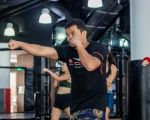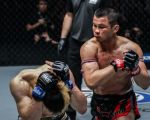Muay Thai vs MMA: Key Differences in Training Techniques
- 1. Introduction to Muay Thai and MMA
- 2. The Basics of Muay Thai Training
- 3. The Basics of MMA Training
- 4. Key Differences in Training Methods
- 5. Choosing the Right Training for You
1. Introduction to Muay Thai and MMA
Muay Thai and Mixed Martial Arts (MMA) are two of the most popular and dynamic combat sports in the world. While both require intense physical conditioning and mental toughness, their approaches to fighting and training are distinct. Muay Thai, often referred to as the "Art of Eight Limbs," is a traditional Thai martial art that focuses on strikes using fists, elbows, knees, and shins. On the other hand, MMA combines techniques from various martial arts, including Muay Thai, Brazilian Jiu-Jitsu, wrestling, and boxing, to create a well-rounded fighting style. Understanding the differences between their training methods can help fighters decide which discipline is best suited for their goals.
2. The Basics of Muay Thai Training
Muay Thai training is centered around striking techniques that utilize the entire body. A typical Muay Thai session includes shadowboxing, bag work, and pad work to develop precision and power in strikes. Fighters learn to condition their limbs through repetitive drills, hardening their shins and elbows to withstand impact. Clinch work, which is a critical aspect of Muay Thai, involves controlling an opponent's posture and delivering powerful knee strikes while in close quarters. Training also emphasizes flexibility, balance, and the ability to absorb and deliver strikes effectively.
3. The Basics of MMA Training
MMA training is a multidisciplinary approach that combines elements of striking, grappling, and submissions. Fighters undergo training in various martial arts such as boxing, Muay Thai, Brazilian Jiu-Jitsu, and wrestling. Striking drills in MMA include practicing punches, kicks, elbows, and knees, much like Muay Thai, but with the added complexity of defending against takedowns. Grappling and wrestling techniques are also integral parts of MMA, helping fighters control opponents on the ground. Submission holds from Brazilian Jiu-Jitsu, such as arm bars and chokeholds, are taught to finish the fight once it goes to the ground. MMA fighters are also conditioned to fight in multiple positions, making it a more versatile combat sport.
4. Key Differences in Training Methods
While both Muay Thai and MMA focus on building strength, agility, and endurance, there are notable differences in their training methods:
- Focus on Striking: Muay Thai training places a stronger emphasis on strikes using all parts of the body, particularly the elbows, knees, and shins. MMA, on the other hand, incorporates a variety of striking techniques from other disciplines, such as boxing and kickboxing, alongside Muay Thai.
- Ground Fighting: Unlike Muay Thai, MMA training involves significant focus on ground combat. Techniques like wrestling, jiu-jitsu, and ground-and-pound (punching from top position) are essential components of MMA training.
- Clinch Work: Muay Thai has a unique clinch game that is less prevalent in MMA. While MMA does involve clinch work, it tends to be shorter and more focused on breaking from the clinch for striking or setting up a takedown.
- Defensive Skills: In MMA, defensive strategies include avoiding takedowns, countering submissions, and defending against various striking techniques. Muay Thai, with its limited range of fighting positions, focuses more on absorbing damage and counter-striking effectively.
5. Choosing the Right Training for You
Choosing between Muay Thai and MMA depends on your specific goals and preferences in combat sports. If you are interested in a sport that emphasizes striking and conditioning, Muay Thai offers a focused and traditional approach. However, if you aim to become a versatile fighter who can handle both striking and grappling, MMA training might be a better fit for you. Many MMA fighters also cross-train in Muay Thai to strengthen their striking game. Ultimately, it’s about finding the right balance of skills that align with your fighting style and aspirations.

































